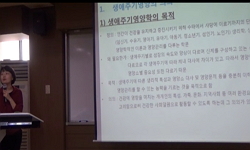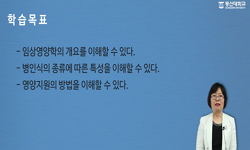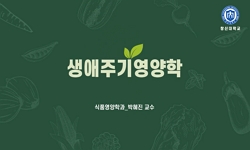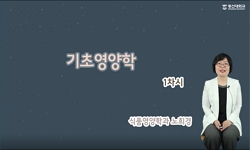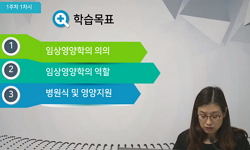This research was to compare and to analyze the recognition and the use of indicated nutritional facts, its inflection, and the experiences of indicated nutritional facts education for 670 randomly selected middle-school students in Seoul. This resear...
http://chineseinput.net/에서 pinyin(병음)방식으로 중국어를 변환할 수 있습니다.
변환된 중국어를 복사하여 사용하시면 됩니다.
- 中文 을 입력하시려면 zhongwen을 입력하시고 space를누르시면됩니다.
- 北京 을 입력하시려면 beijing을 입력하시고 space를 누르시면 됩니다.
서울 일부지역 중학생들의 영양표시제도에 대한 확인 및 이용실태 = The Recognition and The Use of Indicated Nutritional Facts for Middle-school Students in Some Areas of Seoul
한글로보기https://www.riss.kr/link?id=T11402828
- 저자
-
발행사항
서울 : 한양대학교 교육대학원, 2008
-
학위논문사항
학위논문(석사) -- 한양대학교 교육대학원 , 영양교육전공 , 2008. 8
-
발행연도
2008
-
작성언어
한국어
- 주제어
-
발행국(도시)
서울
-
형태사항
vi, 79 p : 삽도 ; 26 cm.
-
일반주기명
지도교수: 엄애선
국문요지 : p. i-ii.
Abstract : p. 69-72.
참고문헌 : p. 66-68. - 소장기관
-
0
상세조회 -
0
다운로드
부가정보
다국어 초록 (Multilingual Abstract)
This research was to compare and to analyze the recognition and the use of indicated nutritional facts, its inflection, and the experiences of indicated nutritional facts education for 670 randomly selected middle-school students in Seoul. This research also purposed to be used as a basic material for younger aged consumers to stand recognition of nutritional facts indication through the positive practice of such.
1. In the degree of processed food preferences depend on the gender, male students preferred beverage, noodle, processed meat, confectionery, other-instant food , diary products , processed fish cakes , frozen foods and canned food in order. For female students, the figure shows other-instant food, confectionery, beverage, diary products, processed meat, noodle, processed fish cakes, frozen foods and canned food are preferred.
There is meaningful difference on each gender's preference on 'noodle' and 'beverage' (p<0.001, p<0.05).
2. Facts that influences on decision making of processed food purchase, male students placed price on the top, and expiry date, taste, ingredient's place of origin, external appearance, food additives, indicated nutritional facts and the manufacturer are placed behind. However for female students, expiry date placed first, and price, taste, ingredient's place of origin, external appearance, nutritional facts indication, food additives, and the manufacturer are followed.
Male students have chosen 'price'as a most significant influence for processed food purchase while female students placed 'expiry date' instead (p<0.05).
3. For the question 'what makes you to purchase processed food', both group have chosen 'its preferable taste' in first place, and 'its conveniences', and 'habitual purchase' followed. Nevertheless, 'its nutritional good' is placed far behind. Both gender groups responded 'its preferable taste' as most important standard for processed food purchase.
4. To find about nutritional facts identification practice, both male and female students positively responded to the question 'whether they have ever been checked the nutritional facts displayed on the products' cover', 85.6% of female students and 76.5% of male students answered 'yes' despite the fact that there still remainsdifferences between the gender(p<0.01).
Both gender groups generally pointed their parents, relatives and friends as a major route for nutritional knowledge and information acquisition and the TV, internet, class lecture, magazines, and newspapers are followed.
5. For the needs of nutritional facts indication, each gender group responded differently (p<0.05).
There is a certain difference between each gender group in the practice of nutritional facts identification (p<0.01).
Among those who have experiences the nutritional facts identification, 39.1% of male students responded 'to find principal nutrition', 25.3% on 'for health maintenance', 23.5% on 'for my own curiosity about newly added information on the package'. Meanwhile, female students responded 'for health maintenance'-39.2%, 'to find principal nutrition'-32.8%, and 'for my own curiosity about newly added information on the package'-17.9% (p<0.05).
Both gender groups, however, positively agreed that it is necessary to indicate nutritional facts on the processed foods (p<0.001).
6. It has been found that there are significant differences between 'nutritionally educated' group and 'nutritionally non-educated' group in the degree of nutritional facts identification in case of noodle, beverage, and instant food purchase(p<0.01, p<0.001).
Those who are 'nutritionally educated' gives more concern on the nutritional facts in instant-food purchase than those 'non-educated' (p<0.05).
The figure shows high rate of 'nutritional facts' recognition even though are not nutritionally educated.
7. There is significant difference existing on 'the needs of nutritional facts identification and its promotion' and 'the degree of impact on daily dietary lifeif foods are purchased after nutrition check' (p<0.001).
'The needs of nutritional facts identification and its promotion' and 'the needs nutritional facts identification on all processed food products' also have shown meaningful difference (p<0.001).
국문 초록 (Abstract)
본 연구는 서울 일부 지역의 남·여 중학생 총 670명을 대상으로 식생활 형태에 대해서 알아보고 가공식품의 이용실태, 영양표시의 이용실태를 비교 분석하여 영양표시를 적극적으로 활용하�...
본 연구는 서울 일부 지역의 남·여 중학생 총 670명을 대상으로 식생활 형태에 대해서 알아보고 가공식품의 이용실태, 영양표시의 이용실태를 비교 분석하여 영양표시를 적극적으로 활용하여 올바른 식품 구매활동을 통해 건전한 식생활을 할 수 있도록 청소년들의 영양표시제도 확립에 기초 자료를 제공하고자 하였다.
1. 성별에 따른 가공식품의 선호도는 남학생의 경우는 음료류, 라면류, 육가공품, 과자 및 빵류, 기타즉석식품, 우유 및 유제품 순이었고, 여학생의 경우는 기타즉석식품, 과자 및 빵류, 음료류, 우유 및 유제품, 육가공품, 라면류 순이었다. 남학생이 여학생보다 라면류(p<0.001)와 음료류(p<0.05)에서 유의적인 차이로 높았다.
2. 성별에 따른 가공식품의 구매 시 고려사항은 남학생의 경우는 가격, 유통기한, 맛, 원료원산지, 외관(모양), 영양표시 순이었고, 여학생의 경우는 유통기한, 가격, 맛, 원료원산지, 외관(모양), 영양표시 순이었다.
유통기한은 여학생이 남학생보다 유의적인 차이로 높았다(p<0.05).
3. 성별에 따라 가공식품을 이용하는 이유는 남·여학생이 맛이 좋아서가 가장 높았고 다음으로 간편해서, 습관이 되어서 순이었다. 그리고 영양이 좋아서에 대한 비율은 남·여학생 가장 낮았다.
4. 성별에 따른 영양표시에 대한 확인 유무는 가공식품 구매 시 제품의 용기 및 포장에 영양표시를 한번이라도 읽거나 확인해 본적이 있는지에 대해 여학생(85.6%)이 남학생(76.5%)보다 영양표시에 대해 '알고 있다'고 하였고, 여학생이 남학생보다 영양표시 확인 대해 유의적인 차이로 높았다(p<0.01).
영양표시 지식 및 정보습득 경로에 대해서 남·여학생이 부모님, 친척, 친구 등에게서 가장 많이 습득했고, 그 다음으로 TV·인터넷, 학교수업, 잡지· 신문 등을 통해 습득했다.
5. 성별에 따른 영양표시 교육에 대한 필요성은 유의적인 차이가 있었다(p<0.05). 여학생이 남학생보다 가공식품구매 시 영양표시를 확인하는 것은 유의적인 차이로 높았다(p<0.01)
식품 구매 시 영양성분 표시를 확인한 적이 있는 경우에 그 이유는 남학생이 어떤 영양소가 많이 들어있는지 확인하기 위해(39.1%), 건강 관리를 위해(25.3%), 식품 포장지의 새로운 내용에 대한 호기심 때문에( 23.5%) 순이었고, 여학생은 건강 관리를 위해(39.2%), 어떤 영양소가 많이 들어 있는지 확인위해(32.8%), 식품포장지에 새로운 내용에 대한 호기심 때문에(17.9%) 순이었다. 성별에 따른 식품 구매 시 영양표시를 확인하는 정도는 유의적인 차이가 있었다(p<0.05).
6. 영양표시교육을 받은 경험이 있는 집단과 받은 경험이 없는 집단이 가공식품을 구매할 때 영양표시를 확인하는 정도는 영양표시 교육받은 경험이 있는 집단이 라면류(p<0.01), 즉석식품류(p<0.01), 음료류(p<0.001)는 유의적인 차이로 높았다. 영양표시교육을 받은 경험이 있는 집단이 그렇지 않은 집단보다 가공식품을 구매할 때‘영양표시’를 고려하였고 유의적인 차이가 있었다(p<0.05). 영양표시에 대해 교육을 받지 않더라고 단순히 인지하고 있는 비율은 높았다. 하지만 영양표시를 활용하는 정도는‘가끔 확인한다’로 하여서 영양표시의 활용도는 낮았다.
7. ‘영양표시에 관한 교육 및 홍보의 필요유무’와‘영양표시를 확인한 후 식품을 구매한다면 식생활에 영향을 미치는 정도’에 대해 유의적인 차이가 있었다(p<0.001).‘영양표시에 관한 교육 및 홍보의 필요유무’와 ‘모든 가공식품의 영양표시 필요유무’에 대해 유의적인 차이가 있었다(p<0.001)
목차 (Table of Contents)
- 국문요지 = ⅰ
- 표목차 = ⅴ
- Ⅰ. 서론 = 1
- 1. 연구의 목적 = 1
- 2. 세부목표 = 3
- 국문요지 = ⅰ
- 표목차 = ⅴ
- Ⅰ. 서론 = 1
- 1. 연구의 목적 = 1
- 2. 세부목표 = 3
- 3. 연구의 제한점 = 3
- Ⅱ. 이론적 배경 = 4
- 1. 가공식품 = 4
- 2. 청소년의 식습관 형태 = 6
- 3. 우리나라의 영양표시제도 현황 = 7
- 4. 외국의 영양표시제도 현황 = 8
- 5. 우리나라의 영양표시의 실태 및 문제점 = 10
- Ⅲ. 연구방법 = 12
- 1. 조사대상 및 기간 = 12
- 2. 조사방법 = 12
- 3. 조사내용 = 12
- 4. 자료 분석 및 통계처리 = 13
- Ⅳ. 연구결과 및 고찰 = 14
- 1. 조사대상자의 일반사항 및 특성 = 14
- 2. 조사대상자의 식생활 형태 = 16
- 3. 가공식품의 이용실태 = 23
- 4. 영양표시의 이용실태 = 37
- Ⅴ. 결론 및 제언 = 61
- 참고문헌 = 66
- ABSTRACT = 69
- 부록 = 73
- 감사의 글 = 79





